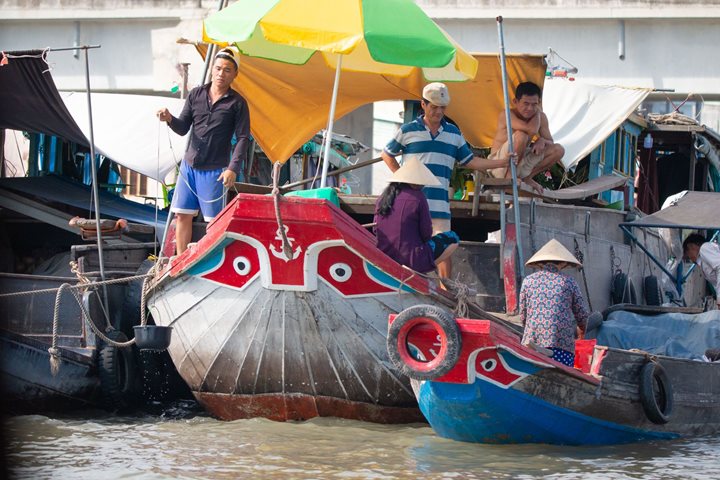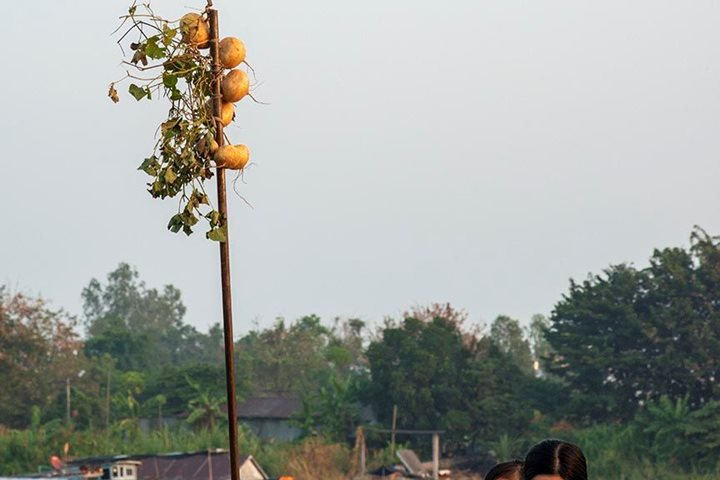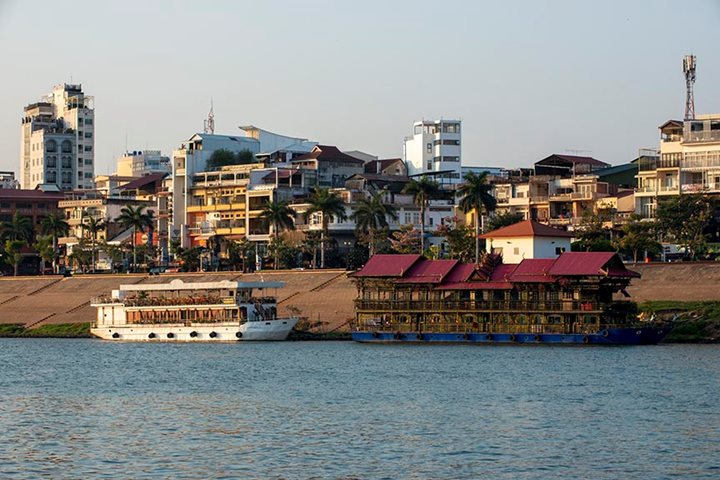This was a day of transitions between related but distinctive chapters of our Cambodia and Vietnam expeditions. While aboard the river yacht Jahan, we explore the Mekong River from its delta in Vietnam, through its bottleneck at Cambodia’s capital of Phnom Penh, up the Tonle Sap River that backs an overflow of summer monsoon current into the great basin of the Tonle Sap Lake, and then finally up the Cambodian section of the Mighty Mekong itself up to Kampong Cham. From the Jahan we venture ashore at riverbanks and in small local boats to see the ingenuity of people on the river and embankments as they scratch, catch, and harvest a living in much the same way they have been doing since the great centuries of the Angkor Empire. But a drive along the high water extremes of the Tonle Sap Lake connects the Mekong to the fantastic temple complexes that reveal the glory and sophistication of that great society, which dominated Southeast Asia for over 500 years, centered near the town of Siem Reap. Siem Reap, which means “small Siam” was a minor backwater town only 15 years ago, and has now become the active base for visiting the numerous and intriguing ancient temples that are still being liberated from a millennium of jungle stranglehold.
With one expedition group departing from Jahan in Kampong Cham and the other ship-bound from Siem Reap, what better place to meet and cross than the perfectly intact 12th century Angkorian Bridge at Kampong K’Dei? This bridge connected the Mekong River communities at Kampong Cham to the great Angkorian Temple complexes 900 years ago, and its multi-headed Naga snake ballustrades still span the bridge in its entirety. The Naga is a snake deity that often appears with numerous heads, connecting the earthly world with the immortal. In Cambodia, the naga is especially prominent and significant as part of Khmer origin mythology and is not considered a bad or evil deity.
For our groups it was not only a transition across the outwash of Kampong K’Dei, but a transition to the next part of the expedition and a fresh set of guides and leaders. It was also a welcome respite from Cambodian highway 6 that runs across the northern reaches of Tonle Sap Lake. The drive was unquestionably interesting with all of the roadside and on-road transport, local color, rice paddies, rubber plantations, and more, but it was also quite bumpy, bouncy, and broken due to a bad flood year and ongoing construction. If we had been carrying a few crates of chickens, a mountain of baskets, and a few pigs we would have fit right in!









